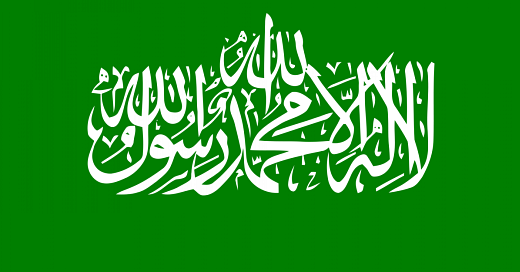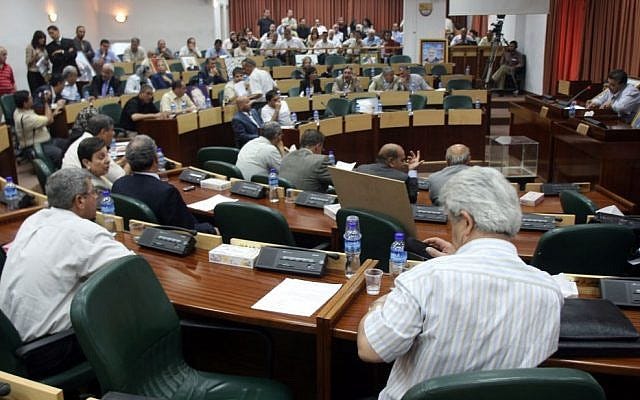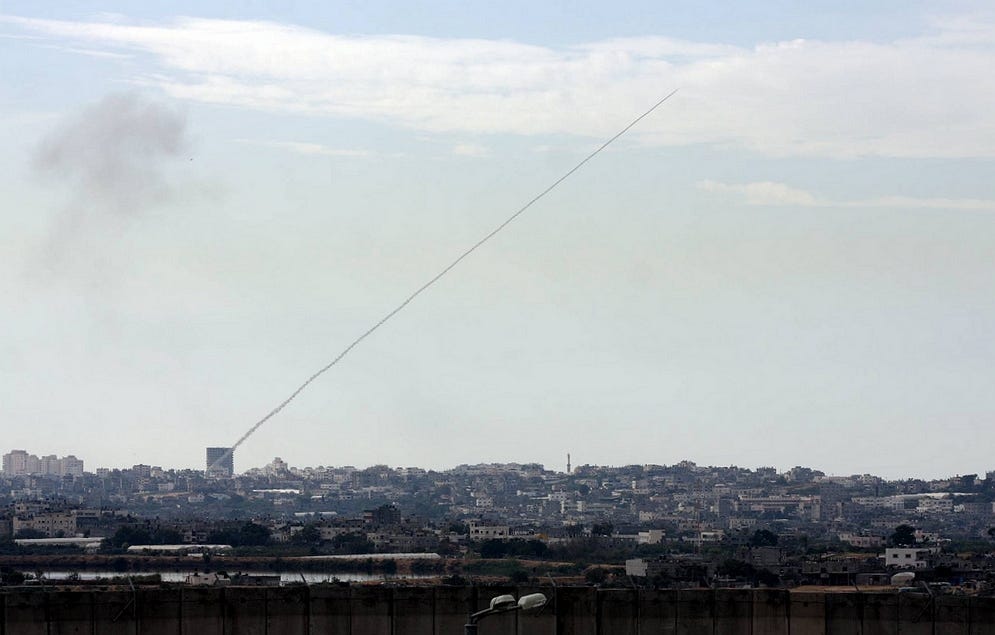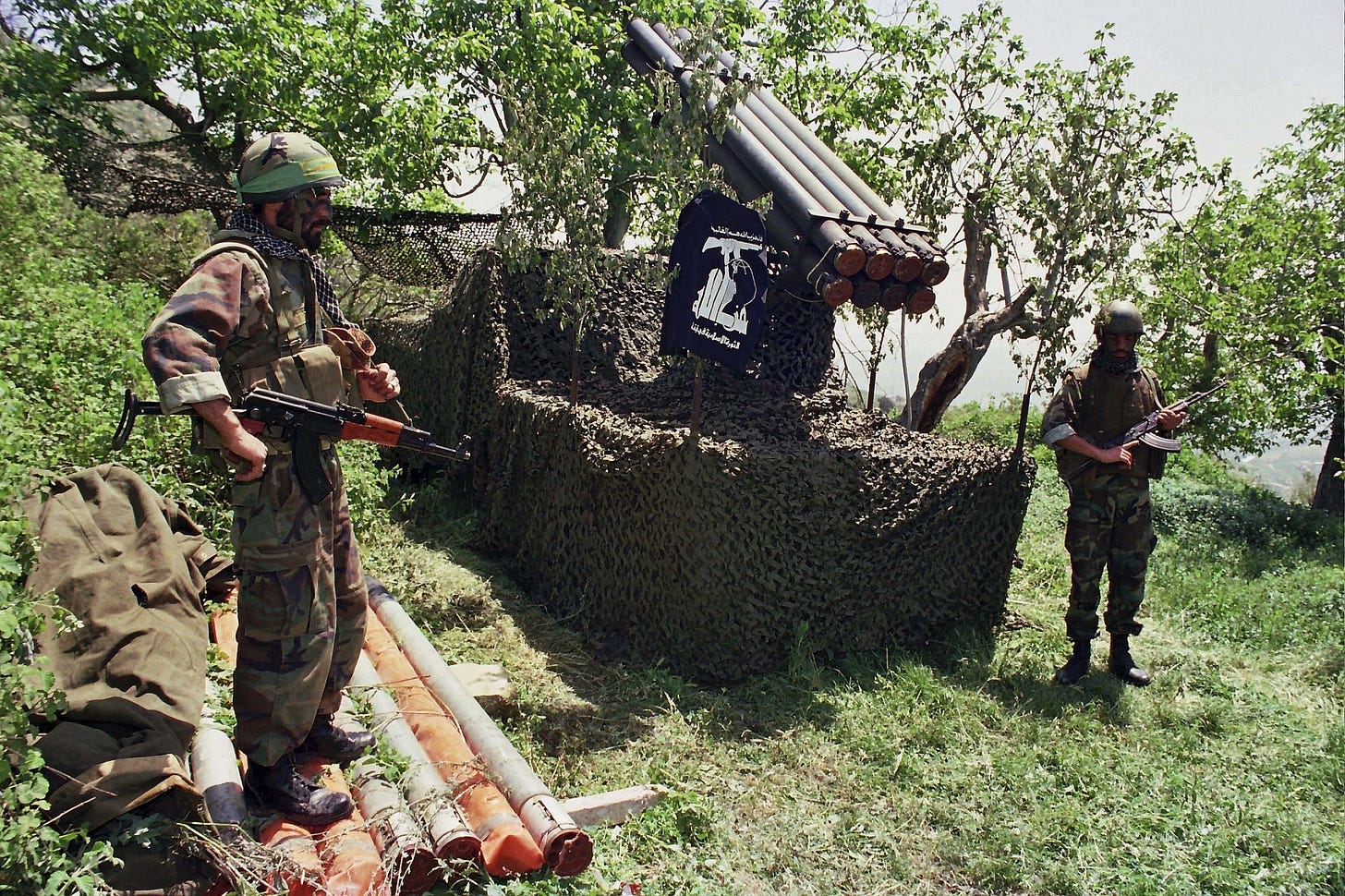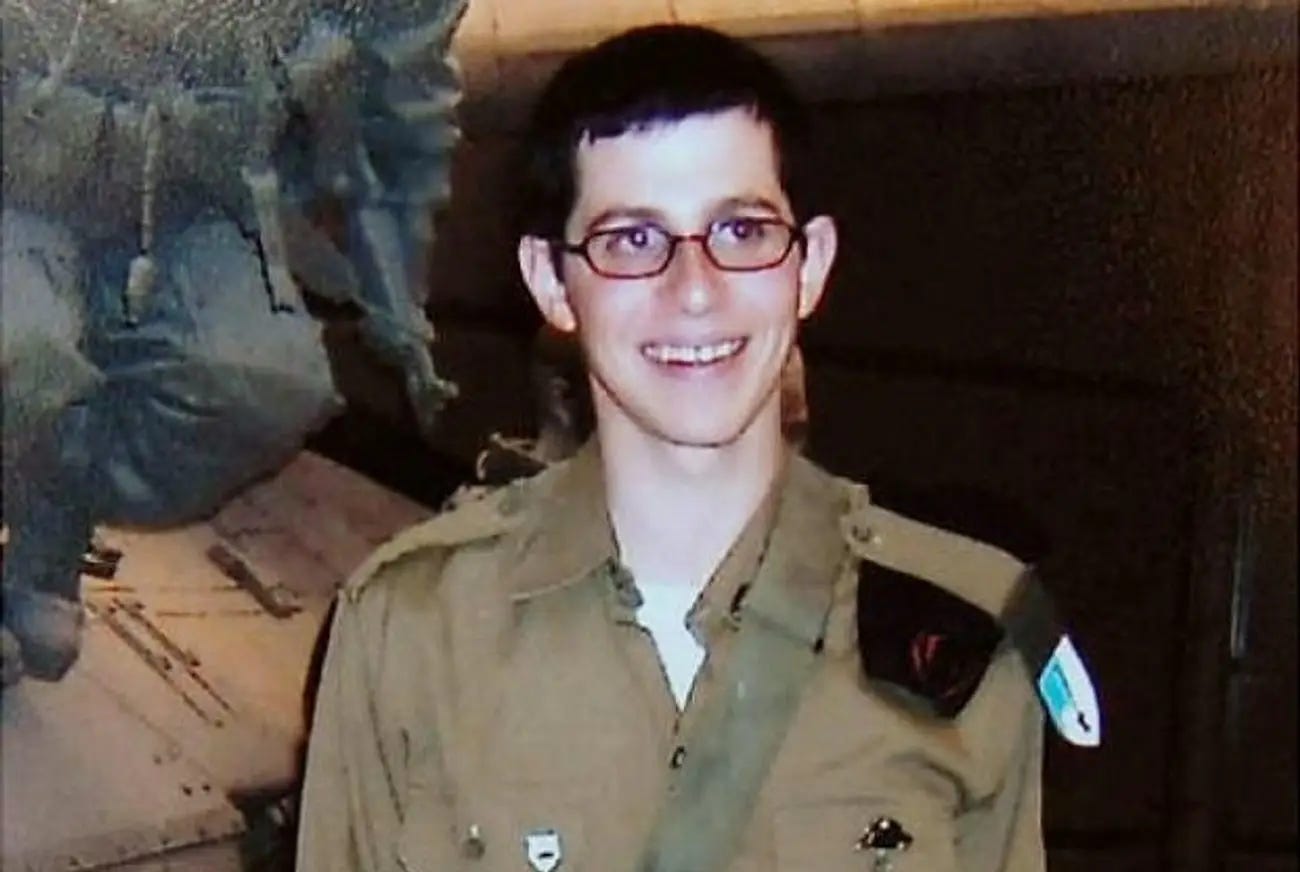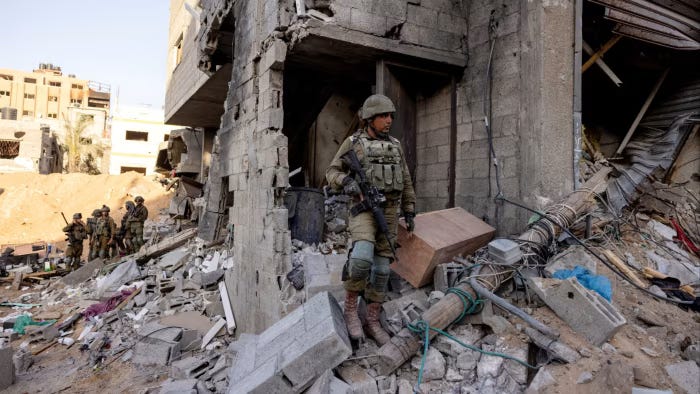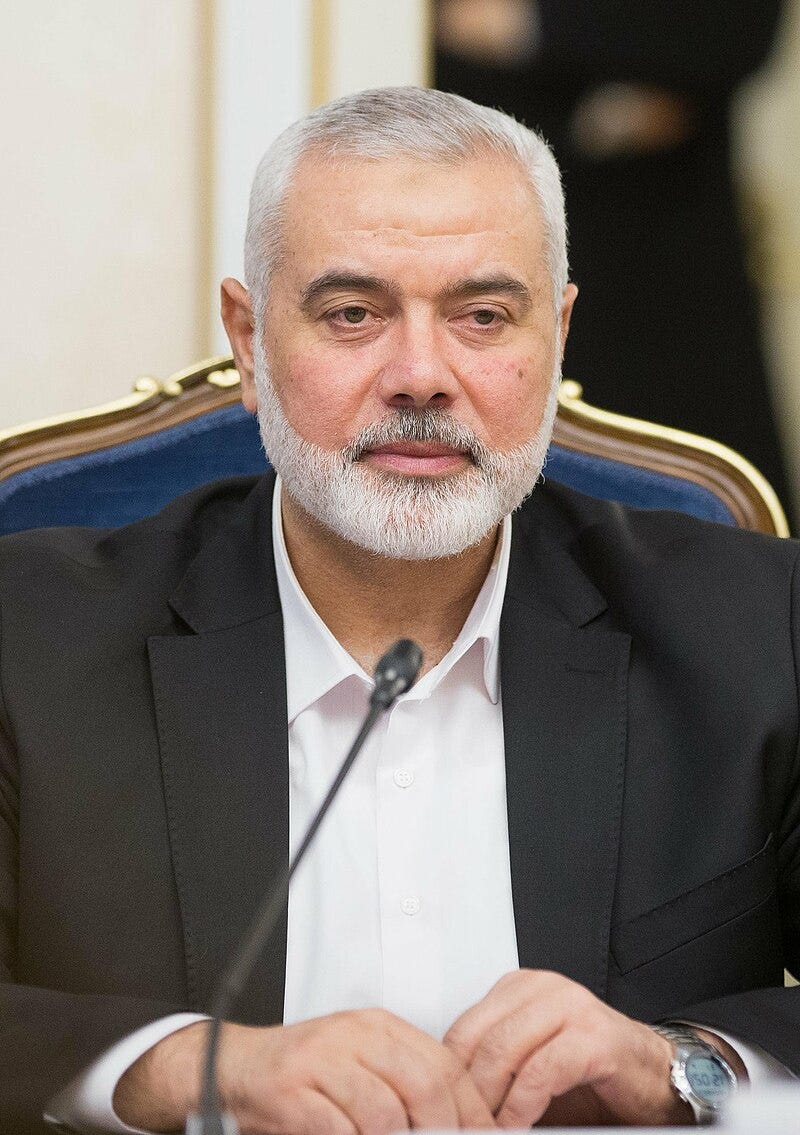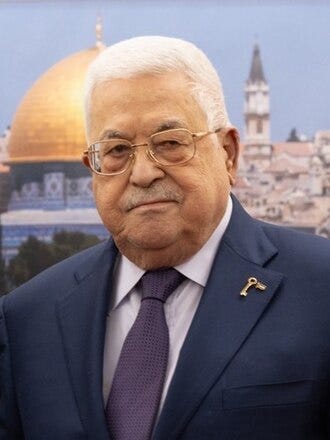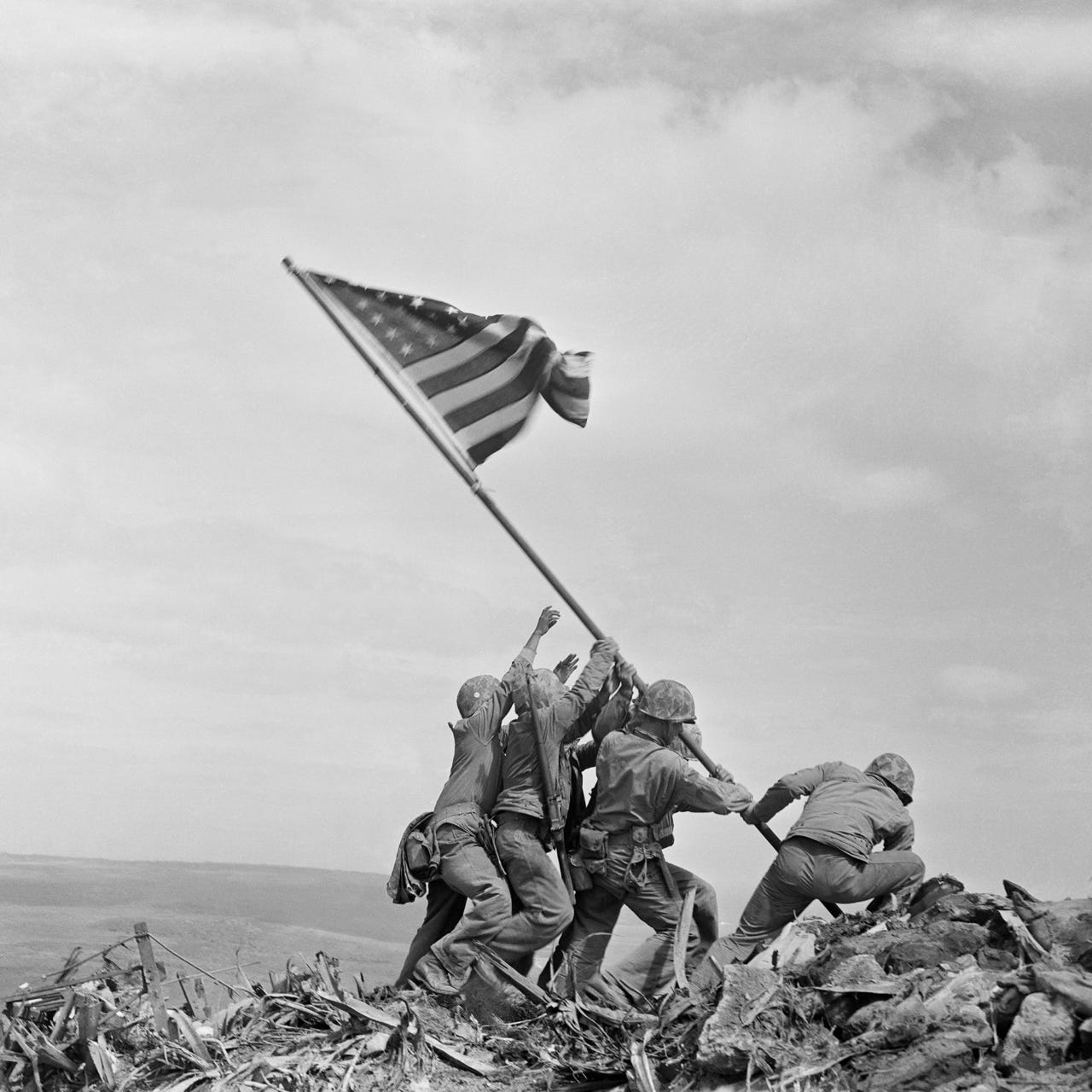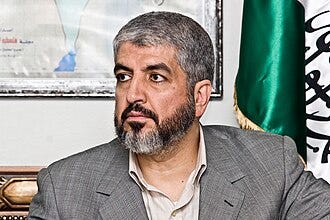In the last installment of my series on Hamas I covered 2003 to 2005 and the withdrawal of all Israeli assets and settlers from the Gaza Strip. Today I will cover the tumultuous time between 2006 and 2009, where Hamas attempted to transform it’s image from one of a brutal terrorist organization to one of a political party ready to govern. It does not go exactly as planned for them. If you would like to read Part III just click the link below.
2006
2005 did not end well for Israel, when on December 18, 2005, Israeli Prime Minister Ariel Sharon was hospitalized following a minor ischemic stroke. During his hospital stay, doctors discovered a heart defect requiring surgery and ordered bed rest pending a cardiac catheterization, scheduled for January 5, 2006. Instead, Sharon immediately returned to work and on January 4, 2006 had a hemorrhagic stroke and was rushed to Hadassah Medical Center in Jerusalem. After two surgeries lasting a total of 21 hours, doctors stopped the bleeding in Sharon's brain, but were unable to prevent him from entering into a coma. Ehud Olmert became Acting Prime Minister that night.
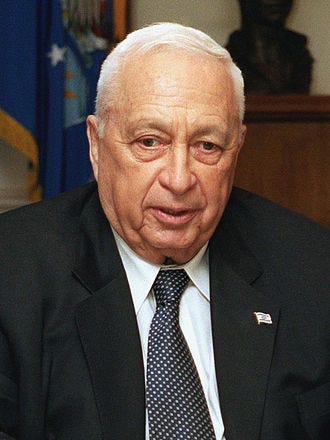
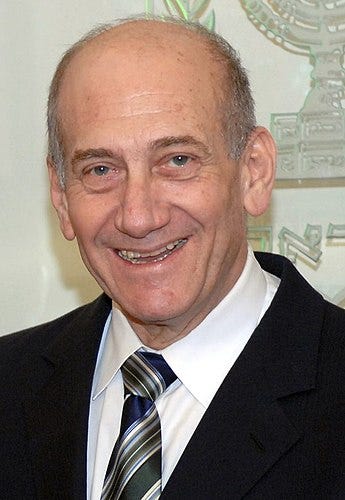
Hamas, on the other hand had made small gains in 2005. It started when they boycotted the January 2005 presidential election, during which Mahmoud Abbas was elected President of the Palestinian Authority. However, Hamas did participate in various municipal elections in the first half of 2005. Hamas candidates won the mayoral posts in both Beit Lahia and Rafah in Gaza and in Qalqilyah in the West Bank. On January 25, 2006, there were another election, this time for a legislative body called the Palestinian Legislative Council. Hamas and their party, the Change and Reform Party, defeated the Fatah party, gaining 74 of the 132 seats with 42.9% of the vote.
The results of the election was regarded as a major setback for governments attempting to mediate the ongoing Israeli-Palestinian conflict. The United States immediately declared that it would not deal with Hamas until it renounced its support of violence, suicide bombings and accepted Israel's right to exist. Israeli president Moshe Katsav and former Prime Minister Shimon Peres both said that if Hamas would accept Israel's right to exist and reject violence, Israel should deal with the organization. Russian President Vladimir Putin said that they would not support any efforts to cut off financial assistance to the Palestinians, stating that Hamas gained power by democratic means. He invited some Hamas leaders to Moscow in March and May 2006, were he repeated that cutting funds to Hamas was a "mistake".
The US and the EU did in fact, cut all funds to the Palestinian Authority, with the US also imposing a financial blockade on the PA's banks, impeding funds of Arab League members (Saudi Arabia and Qatar) from being transferred to the PA. The EU (which gave $500 million per year to the PA) announced that future aid to the Palestinians was tied to "Three Principles" outlined by the international community.
Hamas must renounce violence.
It must recognize Israel's right to exist.
It must express clear support for the Middle East peace process, as outlined in the 1993 Oslo Accords.
Hamas did not seem to be ready to accept such conditions, and rejected them as "unfair". At best, they would be ready to accept the Arab Peace Initiative negotiated at the Arab League Summit in 2002; full normalization of relations with Israel in exchange for Israeli withdrawal to the June 4, 1967, borders, and the return of ALL Palestinian refugees as well as ALL their descendants.
Israel, who collected taxes from Gaza residents, which were then transferred to the PA, decided to suspend the transfer of $55 million in taxes they had already received. That $55 million represented two thirds of the budget of the PA. Israel had done that in both 1991 and 1992, but international aid had covered the losses. Prime Minister Ehud Olmert announced, however, that Israel would guarantee and insure the wages of 165,000 Palestinian civil servants (among them 60,000 security and police officers). Israel also decided to increase controls at check-points, but decided against barring Palestinians from commuting between Gaza and the West Bank or from working in Israel. Israeli Labor Party leader Amir Peretz criticized these measures, saying that they were "indirect ways" to "get around Hamas and strengthen moderate forces" among the Palestinians. Following the elections, Hamas announced the formation of its own security service, the Executive Force, and appointed Jamal Abu Samhadana as it's head. Abbas denounced the move as unconstitutional, saying that only the Palestinian president could command armed forces.
Once they won the 2006 election, Hamas increased the number of rockets and mortars fired into Israel, with Iran initially providing the weapons, but since receiving training from Tehran, Hamas has developed the ability to produce the weapons themselves.
On February 3, three Qassam rockets are fired by Hamas from Gaza into targets in Israel. One rocket hits the kibbutz of Karmia and injured four people, including a one-year-old. The home that was hit belonged to a family that had recently arrived after being evicted from a settlement during the Gaza disengagement.
The period from March to December 2006 was marked by tensions when Fatah affiliated Palestinian Authority commanders refused to take orders from the Hamas-led government. Tensions escalated further, after the two factions failed to reach a deal to share government power.
March 28, for the first time Hamas fires a Katyusha rocket into Israel. It causes no damage of injuries but it is a significant escalation. The Qassam rockets are homemade with a range of seven miles and a warhead of 22 pounds of explosives. The Katyusha rockets were invented in Russia during World War II, but made in many countries. Most of the Hamas rockets come from Syria. They have a range of 19 miles and a warhead of 66 pounds of explosives.
On April 14, 2006, Ehud Olmert became Interim Prime Minister when the Israeli Cabinet declared Ariel Sharon permanently incapacitated.
On May 4, 2006, after elections Ehud Olmert became Prime Minister on May 4, 2006.
On May 23, Israeli forces capture the West Bank military commander of Hamas, Ibrahim Hamed. He was responsible for six suicide attacks that killed 96 people. He is eventually convicted and given 45 life sentences.
On June 25, 2006 IDF soldier Gilad Shalit was kidnapped by Hamas when they crossed into Israel from the Gaza Strip through a tunnel near Kerem Shalom and attacked an IDF post. Two Israeli soldiers were killed and another two, apart from Shalit, were wounded. Two of the attacking militants were also killed. Shalit suffered a broken left hand and a light shoulder wound, and the militants captured him and took him via a tunnel into Gaza. This led to the first time the IDF reentered Gaza since the pull out in 2005.
On June 28, 2006, the IDF launched Operation Summer Rains. Olmert ordered the army to invade Gaza, rescue Shalit and destroy Hamas’s weapons stores. In the early hours of the operation, several bridges were destroyed, effectively cutting the Gaza Strip in half. Power was also cut to 65% of the Gaza Strip after Israeli planes fired nine missiles at Gaza's only power station. Israeli forces also occupied the Gaza International Airport and carried out airstrikes against Hamas training and munitions camps. While the combat ability of Hamas was degraded it was not significantly reduced and Shalit was not found.
On November 1, the IDF launched Operation Autumn Clouds This mission also failed to achieve any of the major goals set forth by Olmert. It ended on November 26, with an Israeli withdrawal and ceasefire between Hamas and Israel, no deal for the release of Shalit had been reached. The ceasefire was only shakily observed, with rockets hitting Israel at an average rate of just over forty five per month.
Facing ongoing international sanctions, the Hamas-led Palestinian Authority depended on the import of large amounts of cash to pay its debts. On December 14 2006, Israel blocked the entry of PA Prime Minister Ismail Haniyeh into Gaza from Egypt at the Rafah border crossing. He was carrying $35 million of dollars in donations marked for the cash-strapped Palestinians. Haniyeh had already cut short his trip due to mounting tensions between Hamas and Fatah. That morning pro-Fatah security officers arrested a Hamas-linked militant in the killing of the three young sons of a Fatah security chief. The militant's allies retaliated by kidnapping a security officer.
A gun battle at the border erupted after Hamas militants, angry that Israel was preventing Haniyeh from returning, stormed the Rafah terminal, which was manned by members of Mahmoud Abbas' Presidential Guard and UN monitors. The Presidential Guard opened fire, setting off a gunfight. The Hamas militants, chanting "God is Great, let's liberate this place" took over the arrival hall, and border guards escorted the European monitors to safety. Two loud explosions rocked the area, and security officials said militants had blown a hole in the border fence about a half mile from the terminal. The rampage destroyed furniture and computer equipment inside the terminal and plunged the area into darkness. 27 people were wounded in the fighting.
With the terminal closed, Haniyeh was stranded on the Egyptian side of the border for several hours. Late in the day the Presidential Guard regained control of the terminal and the European monitors moved back in. Israeli Defense Minister Amir Peretz, working with the EU monitors, had ordered the border closed to prevent Haniyeh from bringing in the money he raised during a tour of Muslim countries. which was left in Egyptian hands. Haniyeh was allowed to cross the border after the situation was brought under control, however the $35 million was left in Egyptian hands. As he was crossing the border, gunmen attacked his car, killing one of his bodyguards and injuring his political advisor as well as one of his adult sons. Arriving home around midnight after a long day at the crossing, Haniyeh was furious over the attack on his convoy. He blamed Israel for the delay but added, "We know the party that shot directly at our cars, injuring some of the people with me and we also know how to deal with this." Abbas strongly denied allegations that members of Fatah and the Presidential Guard were behind the assassination attempt on Ismail Haniyeh.
Fighting also broke out in the West Bank after PA security forces fired on a Hamas rally in Ramallah. Security units loyal to Mahmoud Abbas and dressed in riot gear used clubs and rifles butts to beat back the demonstrators before the shooting broke out. At least 20 people were wounded in the clashes, which came shortly after the attempt to assassinate Ismail Haniyeh.
On December 16, Abbas called for new parliamentary and presidential elections, but his advisor Saeb Erekat told him that elections could not be held before the middle of next year for legal and technical reasons. A senior Hamas lawmaker called it "a real coup against the democratically elected government". Hamas challenged the legality of holding an early election, maintaining its right to hold the full term of its elected offices. Hamas characterized it as undemocratic means to overthrow the results of a democratically elected government. Fatah leaders called for the dismissal of the Hamas-led government and the establishment of an emergency cabinet. The announcement of elections enflamed the tensions and led to battles between Hamas and Fatah supporters.
On December 17, pro-Fatah gunmen attacked Hamas' Foreign Minister Mahmoud Zahar. Pro-Hamas militiamen retaliated with shots at the home of President Abbas, where a member of the Presidential Guard, and a passing woman were killed and five Fatah members were wounded. At the end of the day, Fatah and Hamas agreed on a ceasefire, though gunfire continued outside the house of Mohammed Dahlan, the head of the Gaza branch of Fatah and a member of the Palestinian Legislative Council. President Mahmoud Abbas attempted to incorporate the Hamas-led Executive Force into the PA security apparatus loyal to Abbas, but Hamas rejected the order and instead announced plans to double the size of its force. Intense fighting between Fatah and Hamas left 33 people dead and continued into January 2007.
2007
On January 6, 2007, Abbas outlawed the Executive Force and ordered it disbanded. Fighting continued until a cease-fire was implemented on January 30. The dueling announcements raised the prospect of an intensified armed standoff. Abbas's only means of enforcing the order appeared to be coercive action by police and security units under his command, which were relatively weak in the Hamas stronghold of the Gaza Strip.
February to April 2007: An attempt at reconciliation.
On February fierce fighting took place after Hamas killed six people during an ambush on a PA convoy delivering equipment for the Presidential Guard. According to the PA the deliveries were meant to counter the smuggling of powerful weapons into Gaza by Hamas to be used by the Executive Force. However, Hamas stated the deliveries were intended to instigate sedition (against Hamas), while withholding money and assistance from the Palestinian people. On February 8, a Saudi-brokered talks between Fatah and Hamas produced an agreement on a Palestinian National Unity Government, signed by Fatah and Hamas leaders. The agreement also included measures to end the internecine violence. The unity government was formed on March 17. However, it struggled to resolve the two most pressing issues: the economic crisis and a collapse of security in Gaza. Violent incidents continued through March and April 2007 killing 94 people.
May 2007: More Violence.
In May 2007, clashes erupted once again in the streets of Gaza. In less than 18 days, more than 50 Palestinians were killed. Leaders of both parties tried to stop the fighting by calling dozens of truces, but none of them held for longer than a few days.
June 2007: Unity no more.
The escalation in violence between the two groups in June of 2007 was triggered by Hamas’ belief that the Palestinian Presidential Guard, now numbering 3, 500 and loyal to Mahmoud Abbas, were being positioned to take control of Gaza.
On June 10, the Presidential Guard and the Executive Force began wide-spread fighting in Gaza City. Hamas fighters seized several Fatah members and threw one of them, an officer in the Presidential Guard, off the roof of a 15-story building, the tallest in Gaza. In retaliation, Fatah fighters attacked and killed the imam of the Great Mosque, Mohammed al-Rifati. They also opened fire on the home of Prime Minister Ismail Haniyeh and just before midnight, a Hamas militant was thrown off a 12-story building. The next day the residences of both President Abbas and Ismail Haniyeh were targeted with small arms and artillery fire.
June 12, saw Hamas begin attacking posts held by Fatah. Hundreds of Hamas fighters were involved in the attack, after giving their Fatah two hours to leave. A major Fatah base in the northern town of Jabalia fell to Hamas fighters, after an attack with rocket-propelled grenades and automatic weapons.
On June 13, Hamas attacked the headquarters of the Palestinian National Security Forces in northern Gaza. Gunmen fought for control of high-rise buildings that were serving as sniper positions and an explosion wrecked the Khan Yunis headquarters of the Fatah-linked Palestinian Preventive Security, killing five people.
June 14, President Abbas announced the dissolution of the unity government and declared a state of emergency and fired Prime Minister Ismail Haniyeh. However, as observed by Haniyeh, the Palestinian Constitution did indeed give Abbas the power to declare a state of emergency and dismiss the Prime Minister the state of emergency could continue only for 30 days. After that it would need to be approved by the (Hamas-dominated) Legislative Council. In response Hamas militants entered the National Security headquarters compound where a small firefight broke out, killing ten people. The militants also commandeered both vehicles and weapons inside the compound. Hamas TV broadcast a display of weapons inside the building, as well as jeeps, mortar shells and bulletproof vests seized in the compound. According to Hamas these items were smuggled into Gaza by the US and Israel through the border with Egypt in order to help Fatah defeat Hamas. That afternoon, an explosion rocked Gaza City, according to Fatah officials, security forces withdrawing from their post, blew it up lest it fall into the hands of Hamas. That evening Hamas also took control of the southern Gaza city of Rafah.
On June 15, Hamas completed their take over of the Gaza Strip. All PA government institutions were seized and all PA officials were replaced with Hamas people. Also on the 15th, Mahmoud Abbas appointed Salam Fayyad as prime minister and ordered him to form a new government. The international community quickly recognized the government. Within days, the US ended a 15-month economic and political boycott of the Palestinian Authority in a bid to bolster President Abbas and the new Fatah-led government. The European Union similarly announced plans to resume direct aid to the Palestinians, while Israeli Prime Minister Ehud Olmert released the $55 million in taxes, that had been withheld since Hamas took control of the Palestinian Parliament.
West Bank clashes
Hamas attacks on Fatah forces in the Gaza Strip resulted in clashes between the two groups in the West Bank as well. While Gaza was a Hamas stronghold, Fatah had the majority of support in the West Bank. The conflict in the West Bank saw its first casualty when the bullet-riddled body of a Hamas militant was found in Nablus. This sparked fears among Hamas members in the West Bank, that Fatah would use its numerical advantage in the West Bank to retaliate for any killings in Gaza.
On June 16, the Fatah allied al-Aqsa Martyrs Brigade stormed the Hamas-controlled parliament building in Ramallah. This act, including the ransack of the Ministry of Education, was seen as a reaction to similar looting that occurred in Gaza.
June 20, saw Hamas leader Mahmoud Zahar declare that if Fatah continued to try to uproot Hamas in the West Bank, Fatah could see a repeat of what had happened to them in Gaza. He did not rule out any tactic, including suicide bombings, as a form of resistance against Fatah, if it came to that.
October to December 2007: renewed clashes
On October 17, clashes erupted in eastern Gaza between Hamas security forces and members of the powerful Heles clan (Fatah-affiliated), leaving up to two dead on both sides. Fatah and Hamas officials gave conflicting accounts of what caused the fighting but the dispute seems to have originated when Hamas officials demanded that the clan return a governmental car. Another gun battle on October 20 killed one member of the clan and a 13-year-old boy. During the same day, in Rafah, one woman was killed and eight people were injured when Hamas security members traded fire with Islamic Jihad activists. Two days later, seven more Palestinians were killed in the internal fighting, including some Hamas members and a Palestinian Islamic Jihad militant.
On 12 November, a large demonstration dedicated to the memory of late Palestinian Authority President Yasser Arafat was organized by Fatah in Gaza City. With over 200,000 participants, this was the largest Fatah demonstration in the Gaza Strip since the Hamas takeover. The demonstration was forcibly dispersed by Hamas gunmen, who fired into the crowd. At least six civilians were killed and over 80 people were injured, some from being trampled in the resulting stampede.
2008
On January 1, 2008, eight people died in fighting between Fatah and Hamas in the Gaza Strip. While 2007 saw mostly fighting between Hamas and Fatah, Hamas never forgot about Israel and 2008 saw a uptick in attacks against both civilian and military targets inside Israel.
On February 4, a Hamas suicide bomber blew himself up at a shopping center in Dimona, Israel. One person is killed and nine are wounded.
On February 26, a Grad rocket hit the grounds of the Barzilai Medical Center, 220 yards from the neonatal intensive care unit. Because the hospital is only six miles from the border it is the frequently the target of rocket attacks, with 140 rockets fired at it over the course of one weekend.
On February 27, Hamas fired 49 Qassam rockets into the Western Negev and southern Mediterranean coast. Many hit the cities of Ashkelon and Sderot among others. One of the rockets lands in a parking lot at the Sapir Academic College killing one and injuring five.
On March 23, 2008, Hamas and Fatah sign the Sana'a Declaration in Yemen that called for a return of the Gaza Strip to the pre-June 2007 situation. Disagreement about the interpretation immediately appeared. Fatah said that Hamas should relinquish its hold on Gaza first, while Hamas demanded the reinstatement of the Hamas-led unity government.
On April 19, three Hamas suicide bombers broke through the border fence at Kerem Shalom and blew themselves up at the nearby IDF post. Four soldiers were wounded.
Hamas fighters in the Gaza Strip fire a mortar at kibbutz Nirim in the western Negev desert on June 8. One person is killed and four are wounded.
Indirect negotiations between Hamas and Israel mediated by Egypt produced a bilateral cease-fire that went into effect on June 18. The agreement also called for a gradual reversal of the siege of Gaza, as well as renewed negotiations on a prisoner exchange, including the release of captured IDF soldier Gilad Shalit. During the initial week of the ceasefire, Islamic Jihad militants fired rockets on Israel. Under pressure from Hamas, Islamic Jihad agreed to abide by the temporary truce, which was meant to apply only to Gaza, but had balked at the idea of not responding to Israeli military actions in the West Bank. During the next five months of the ceasefire, attacks from Gaza decreased significantly to a total of 19 rocket and 18 mortar attacks, compared to 1199 rockets and 1072 mortar shells in 2008 up to June 18. The agreement also called on Israel to increase the level of goods entering Gaza by 30% over the pre-lull period within 72 hours and to open all border crossings and allow the transfer of all restricted goods into Gaza within 13 days of the beginning of the ceasefire.
Israel releases 199 Palestinian prisoners on August 25, as a goodwill gesture during a visit by US Secretary of State Condoleezza Rice.
On September 22, a Hamas member, Qassem Mughrabi, from East Jerusalem, drove his BMW sedan into a large group of IDF soldiers near a busy intersection in Jerusalem. 19 people are wounded in the attack.
A six-month long ceasefire between Israel and Hamas ended on November 4, when the IDF conducted a raid into Deir al-Balah, in central Gaza, to destroy a tunnel, killing several Hamas militants. Israel said the raid was a preemptive strike to counter a Hamas operation to abduct Israeli soldiers, while Hamas characterized it as a ceasefire violation, and responded with rocket fire into Israel. Attempts to renew a truce between Israel and Hamas were unsuccessful.
Palestinian reconciliation talks due to be held in Cairo, on November 8, 2008, are called off after Hamas announced a boycott in protest of the detention of hundreds of its members by President Mahmoud Abbas's security forces.
On December 27, Israel began Operation Cast Lead with the stated aim of stopping rocket fire. In the initial air bombardment, Israel attacked police stations, military targets including weapons caches and suspected rocket firing teams, as well as political and administrative institutions, striking the cities of Gaza City, Khan Yunis and Rafah. After the operation began multiple Palestinian groups fired rockets into Israel.
2009
On January 1, an Israeli airstrike on the Gaza Strip city of Jabalia kills senior Hamas military commander Nizar Rayan and six members of his family
An Israeli ground invasion began on January 3. During the last week of the offensive beginning January 12, Israel mostly attempted to hit Palestinian rocket-launching units. Hamas intensified its rocket and mortar attacks against civilian targets in southern Israel, reaching the major cities of Beersheba and Ashdod for the first time. The Israeli cabinet ultimately decided against striking deeper into Gaza amid concerns of higher casualties on both sides and rising international criticism. On January 17, Israeli officials announced a unilateral ceasefire. The ceasefire came into effect at midnight on January 18 and consisted of two phases: 1. A ceasefire is declared. If Hamas stops firing rockets then Israel will pull its forces out of the Gaza Strip. 2. If rocket fire resumes then the IDF goes back in, this time with the international backing gained by having tried a truce. Prime Minister Olmert declared that the military objectives had been met but Hamas initially vowed to fight on, and responded that any continued Israeli presence in Gaza would be regarded as an act of war. Farzi Barhoum, a Hamas spokesman, said before the ceasefire began:
The occupier must halt his fire immediately and withdraw from our land, lift his blockade and open all crossings. We will not accept any one Zionist soldier on our land, regardless of the price that it costs.
571 rockets and 205 mortar shells landed in Israel during the 22 days of the conflict, killing three Israeli civilians and wounded twelve. There were 871 militants killed and an unknown number of militants wounded along with 295 Palestinian civilians killed and 513 wounded. Ten Israeli soldiers were killed and 31 wounded.
On January 25, Palestinian militants resumed rocket fire into southern Israel. Four of the six rockets fired, landed in or near Sderot. The IDF returned fire and the Israeli Air Force launched an air strike against the rocket launching site in northern Gaza.
On March 31 Benjamin Netanyahu becomes Prime Minister of Israel.
On May 19 Netanyahu meets US President Barak Obama at the White House where they discuss the Israeli-Palestinian conflict and Israel’s West Bank settlements. While Obama says that a two state solution is a priority, Netanyahu refuses to support the creation of a Palestinian state. Netanyahu maintains that Israel has the right to continue settlements but Obama wants settlement growth to be frozen.
Ten days after President Obama’s speech at Cairo University,
Netanyahu gives a speech at Bar-Ilan University. In the June 14 speech he endorsed, for the first time, a "Demilitarized Palestinian State". This is after refusing to commit to anything more than a self rule autonomy, when he entered office. The speech is considered a response to Obama’s speech in Egypt.
On September 12, Chairman of the Hamas Politburo Khaled Mashal makes a speech to a group of top Hamas leaders where he states:
Military force is an option that our people resort to because nothing else works. The reality is that nearly 20 years of peaceful negotiations between the Palestinians and the Israelis have not restored any of our rights. On the contrary, we have incurred more suffering and more losses as a result of the one-sided compromises made by the Palestinian negotiating party.
This speech is seen as another dig against the Palestinian Authority and their president Mahmoud Abbas. It is clear that even after many different efforts at bringing Hamas and the PA together there is still was a great deal of animosity.
On October 2, Israel releases twenty female Palestinian prisoners in exchange for Hamas releasing a video that proves that Gilad Shalit is still alive. After receiving the video it is shown on Israeli TV.
On November 25, Prime Minister Netanyahu announces a ten-month moratorium on permits issued for new home construction in the West Bank (excluding East Jerusalem). This is seen as a result of pressure from the Obama administration, which urged the sides to seize the opportunity to resume talks. In his announcement, Netanyahu calls the move "a painful step that will encourage the peace process" and urges the Palestinians to respond.
What has driven Hamas’ actions since 2006? One must examine their position among the various Palestinian organizations and their path from a purely militant one to a quasi-governmental organization. Because violence is considered a defense against a threat, the ability to commit violence against Israel is an important source of legitimacy for Hamas, despite their governmental role in Gaza. Hamas uses violence to enhance the symbolic status of their leaders among the rank and file. Even if Hamas had reduced its references to resistance during the 2004-06 electoral campaigns, its posters of martyrs on every street corner in Gaza, effectively reminded Palestinians of its ideological core. In fact, the Hamas electorate is unlikely to tolerate any diversion from the political and religious principles which Hamas has consistently advocated.
Hamas’ commitment to violence is central to the Palestinians’ internal struggle. When the PLO signed the Algiers Declaration, recognized Israel and tried to demonstrate it could run a government, not just kill Israelis. They relinquished their position as a radical guerrilla faction. It created a vacuum that Hamas immediately filled. From the very beginning, Hamas’ success has been based on its rejection of Arafat’s diplomatic strategy. When Arafat launched the Intifada in 2000, he was partly motivated by Fatah’s plummeting popularity and the increasing charisma of Hamas. The intifada, Arafat hoped, would restore his image as a Palestinian liberator, but he had lost the confidence of the Palestinian electorate because of his perpetual shifts from secularism and peace, to Islamic references and calls for war. Therefore, Hamas was alert to the need to remain steadfast if it wanted to maintain its leading position. In addition, while Arafat’s strategy has borne little fruit, Hamas’ stance has been praised, not only in Palestine but in all the Muslim world. In fact, even the most gruesome violence perpetrated by Hamas during the second intifada did not alienate the Muslims of the world.
Since January 2009, Hamas attempted to prevent the other militant factions from firing rockets, thereby increasing tensions. In fact Fathi Hammad, Hamas’ Minister of the Interior, asked the factions not to launch rockets “to preserve the highest interests of the Palestinians,” which really meant, to avoid Israeli retaliation. This kind of call was regularly repeated by Hamas officials including Ismail Haniyeh who declared:
“We are contacting the other Palestinian factions in order to reach an internal consensus as to the measures we may take in order to protect our people and strengthen our unity.”
However, this policy was denounced by other Jihadist groups inside Gaza. For example, in November 2009, Islamic Jihad accused Hamas of preventing its fighters from firing rockets. In fact, Hamas did not hesitate to crush the groups that did not abide by its rules, including a group of Popular Front for the Liberation of Palestine militants who, after complaining that Hamas’ policies were too moderate, were attacked by the Hamas police in August 2009.
Since the end of Operation Cast Lead, Hamas negotiated on several issues with Israel and Fatah with Egyptian mediation. Among the issues discussed, were the release of Israeli soldier Gilad Shalit, reconciliation with Fatah, and establishment of a new ceasefire with Israel. While, reconciliation was regularly announced, it had not been achieved and despite rumors in November of 2009, that Shalit might be freed shortly, by the end of 2009 he was still in the hands of Hamas. With the negotiations at a stand still, Egypt accused Hamas several times of hindering the progress of the negotiations.
It appears that difficulties encountered by Egypt during its mediation were partly due to dissension within Hamas over the conditions of the negotiations. Hamas’ internal divisions, even within the delegation negotiating with Egypt, were impeding the negotiations around the ceasefire, with the hardliners refusing to compromise over Hamas’ control of the border with Egypt and blocking Shalit’s release.
We will see as I go forward, that the inability of Hamas to reconcile it’s terrorist roots with it’s role in governing Gaza is a main factor in the conflict with Israel. I hope you find these articles informative and are looking forwards to reading more. Please share these posts with as many people as possible. We need to make sure that as many people as possible know the true nature of this brutal group and their plans for Israel and Jews around the world.
Chris

